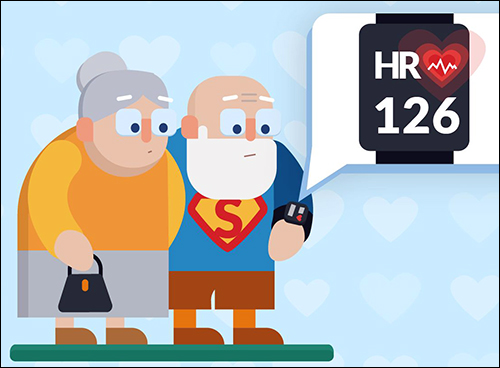Interest in fitness trackers, smart watches and other wearable devices with embedded pulsometers, heart-rate monitors and other sensor units is growing fast. According to research firm Statistica, the global market for smart wearables devices will be approximately $53.2 billion by 2019. And as for wearable devices in the health-care sector, in particular, the revenues are expected to reach $4.4 billion globally.
Beyond that, the global remote cardiac monitoring and rhythm market is supposed to exceed $26.6 billion by 2020, according to research conducted by Markets and Markets.

Cardiovascular disease is the leading global cause of death, accounting for 17.3 million deaths annually. With this number expected to grow to more than 23.6 million by 2030, health-care providers are searching for ways to get individuals to better track their health and practice preventative health care.
Taking this into account, we should be looking at how consumers might use different types of wearables to track their heart health and monitor for symptoms that could be precursors to a stroke or cardiac arrest. Although wearables cannot replace cardiographs used in clinical diagnostic procedures, the majority of heart-rate monitors can generate vital and reliable statistics to individuals and their physicians. Even simple alerts, able to track abnormalities, can save a person’s life.
The diagnostic tools required for analyzing heart rhythm or recognizing problematic patterns have traditionally been available only in clinical settings, such as in a hospital or doctor’s office.
Yet, the sooner a patient receives medical attention, the better his or her chances are for survival. That’s why we need tools that will allow us to anticipate heart attacks outside hospitals. Not only can wearable digital devices generate data that can enable individuals to practice preventative health care, but they can also be used to minimize the risk of false alarms, by generating data that individuals use to decipher real heart-related symptoms from acid indigestion or bronchial asthma which can also cause chest discomfort.
Thus, the growing popularity of heart-rate monitors for fitness tracking could have ancillary benefits for consumers.
With medical data analysis software, IT companies can address the challenge of gathering and analyzing the huge amount of data that wearable devices generate. But a range of issues must be addressed before wearable heart trackers can be leveraged to help individuals anticipate possible heart problems, including stroke:

1) Collection of statistical data. Analyzing cardiographs collected from a range of devices and sensors may become more complicated due to a model range diversity and data format incompatibility. So, one big challenge here is the creation of a universal interpreter to recognize files of different formats.
2) Microprocessors and new patterns. Current fitness trackers have powerful processors, but mobile health-care application developers will need to be able to analyze data culled from pulsometers, to enable users not only to track their fitness level, but also to detect abnormalities that could be linked to heart problems.
3) Clinical trials and certification. These represent a third major challenge, because if developers want to convert simple fitness trackers into high-quality medical devices, they will first need to have the devices certified.
The fact that the demand on wearables is growing year after year shows that such devices can truly facilitate and, in the case of heart trackers, save users’ lives. Nevertheless, developers should not stand still. By trying to eliminate all possible cons and work to improve trackers’ functionality, they can give individuals and doctors a chance to get ahead of heart-health conditions.
Yana Yelina is a website design and development expert at EffectiveSoft, a custom software-development company. Yelina interviews software developers and designers to share expertise in information technologies across an array of topics, such as health care, education, trading, logistics, e-commerce and social media. You can reach her via email at [email protected] or [email protected].

